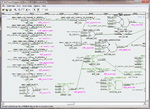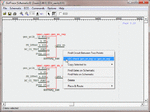Nandy
Advanced Member level 4

- Joined
- Dec 16, 2005
- Messages
- 116
- Helped
- 6
- Reputation
- 12
- Reaction score
- 4
- Trophy points
- 1,298
- Location
- San Jose CA
- Activity points
- 2,399
This is a real case. A timing ECO iteration added an extra inverter somewhere in the design. Hundreds of inverters/buffers have been added, it's impossible to check one by one to see which inverter is the extra one. Debugging with Formal tools shows lots of support points causing the mismatches, but it doesn't help too much. What would you do if it happens in your timing closure? Well, revert back the database can solve the problem, but the flow still needs to be checked how the extra inverter is introduced.
Check the following link to see how Gates On the Fly solve the issue by the built-in Logic Equivalence Check feature.
https://www.nandigits.com/use_case_find_extra_inv.htm

Check the following link to see how Gates On the Fly solve the issue by the built-in Logic Equivalence Check feature.
https://www.nandigits.com/use_case_find_extra_inv.htm


